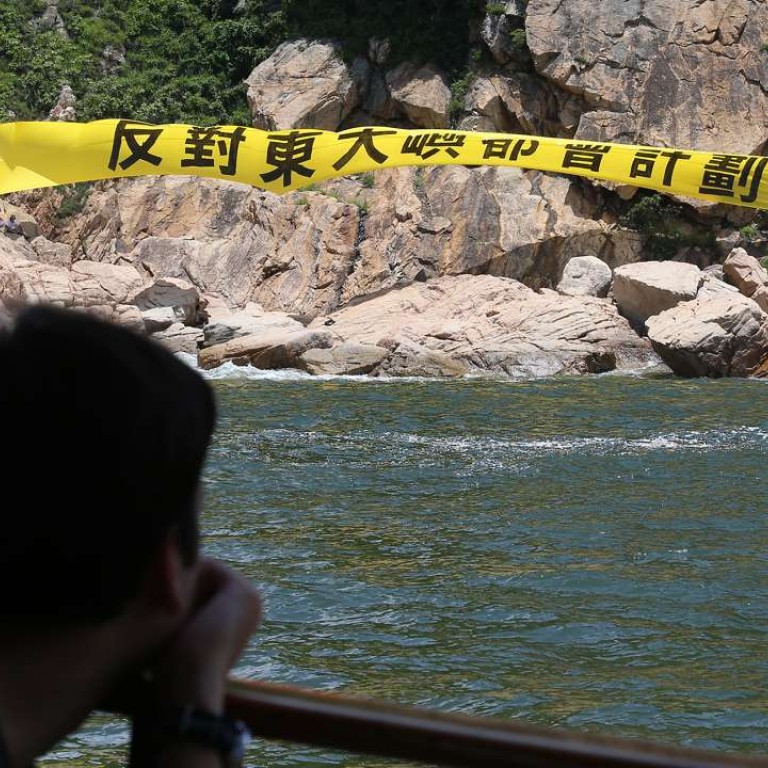
Coalition slams east Lantau reclamation plan as Hong Kong’s largest white elephant, saying it is too costly and impractical
East Lantau Metropolis Concern Group says project will provide too much housing and infrastructure
Around 20 civic, environmental and professional organisations have jointly launched a new concern group to oppose the government’s East Lantau development plan, calling the project too costly and “impractical”.
The government plans to reclaim 1,000 hectares of land around two existing islands off the coast of east Lantau, as well as develop the south of Lantau island, according to its blueprint mapping out the city’s development beyond 2030.
The East Lantau Metropolis (ELM) is envisaged to be the city’s third business district and will accommodate a population of between 400,000 and 700,000.
Members of the ELM Concern Group called it Hong Kong’s largest “white elephant” project and raised questions about whether it would be justifiable and practical.
“By 2043 when this is built, the estimated population will have already peaked and started to fall. Is it justifiable for the government to spend so much money just on a contingency plan to allow for so much flexibility for possible population changes?” said Dr Thomas Yam Hinbong, a member of Save Lantau Alliance.
Yam estimated the project would cost at least HK$400 billion, or half of the city’s fiscal budget reserve.
The population is set to peak at 8.22 million in 2043 and fall to 7.81 million in 2064, according to official population projections.
Yam said there would be a 16 per cent housing surplus in Hong Kong as a whole if the East Lantau project went ahead since the current target to build an additional 460,000 units in the next decade would be enough to meet peak household demand in 2043.
He said there would also be a 10 per cent infrastructure surplus.

The Planning Department has said the extra capacity for housing will allow a buffer for larger living space in both private and public accommodation.
Ronald Taylor, an infrastructure engineer, said building transport links from Hong Kong Island to the two islands off Lantau was not a matter of feasibility.
“If you ask an engineer, anything is possible. But being possible comes with costs, timing and risks. What is possible may not be practical,” Taylor said.
Building a tunnel or road to link one of the islands – Kau Yi Chau – and Kennedy Town would be extremely costly and disruptive to the channel, which also serves as a shipping route for the container ports and the Pearl River Delta, Taylor said.
He cited deep water between Kau Yi Chau and the other island – Hei Ling Chau – as one of the complications. The channel, around 31 metres deep, was about three times as deep as Victoria Harbour and construction would be very risky and costly, Taylor said.
He added that the government had conducted a study 20 years ago to build a road link between Kennedy Town and Green Island, which is close to Hong Kong island. The study concluded that it was not practical, Taylor said.
The government is seeking Finance Committee approval for HK$248 million to conduct a feasibility study for the East Lantau project.
Last week, the government revealed that a HK$45 billion tunnel and bridge project linking Tuen Mun and Lantau will be delayed.

